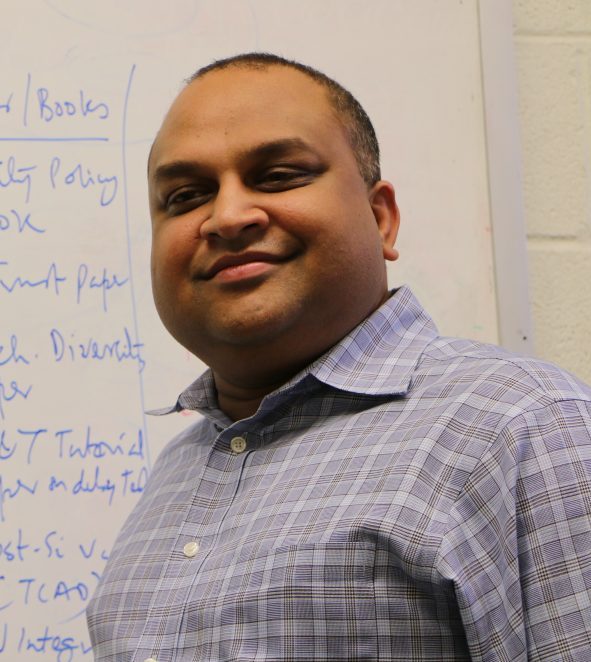Artificial Intelligence of Things (AIoT)—combining AI with IoT devices—and its applications are of paramount importance in the ongoing fourth industrial revolution, which is marked by the seamless fusion of physical and digital systems. Demand for a well-trained workforce in this area has been steadily increasing. But access to hands-on hardware-focused AI learning experiences has been limited.

“Current AI research and education predominantly emphasize software skills, leaving a notable gap in the integration of hardware expertise,” said Dr. Rui Guo, instructional assistant professor in the Department of Engineering Education.
Additionally, many educational institutions face resource constraints, limiting their ability to offer hands-on AI learning experiences.
At the Warren B. Nelms Institute for the Connected World, Dr. Guo and collaborators Dr. Sandip Ray and Dr. Swarup Bhunia are addressing these challenges with a newly-funded National Science Foundation project. The project will revolutionize Artificial Intelligence (AI) education by establishing a remotely accessible AIoT infrastructure, making state-of-the-art hands-on labs available to a broader student audience.
“This platform aims to lower entry barriers to AIoT education, making cutting-edge lab environments accessible to a wider range of learners.” – Dr. Rui Guo
It will also introduce immersive learning strategies to enhance student engagement and understanding, making AI education more inclusive and accessible. This inclusivity fosters diversity, creating a talent pool with varied perspectives that can drive innovation in the industry.

Through collaboration and resource sharing among participating universities, University of Florida, North Carolina A&T, and Prairie View A&M University, this project will directly impact over 30 instructors and 1,500 undergraduate students across institutions.
Currently, automotive systems are being used as a demonstration platform. AI applications in automotives encompass virtually all the characteristics of AI applications for IoT and cyber-physical applications. Dr. Ray’s team has developed an immersive virtual learning environment (IVE), a platform designed to enhance students’ understanding of automotive security, with a focus on ranging sensor attacks.
“With the IVE platform, students will have remote access to the automotive simulator that gives you the same effect as someone who is sitting at the real simulator,” Dr. Ray said. “They can learn ethical hacking of automotive systems through remote access via the augmented reality platform.”

As part of the new project, researchers will develop learning modules for AIoT education by using and expanding on the IVE platform.
“Our research team will stick with the rules of making the modules scalable and at low cost for extensive accessibility by a large number of users from diverse backgrounds, as well as self-contained for flexible adoption to a wide scope of teaching needs. This approach helps learners build a solid foundation of knowledge by starting with familiar, tangible examples and gradually shifting towards more holistic ideas,” Dr. Guo said.
Through the proposed remotely accessible AIoT infrastructure, students will not only enhance their software skills but also gain hands-on experience in integrating AI with hardware systems for a comprehensive understanding of the field, leading to a well-trained future workforce.